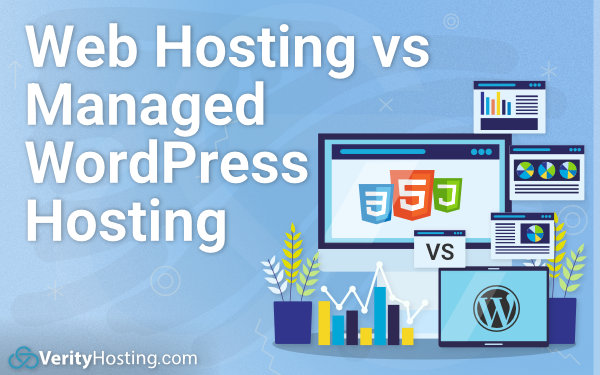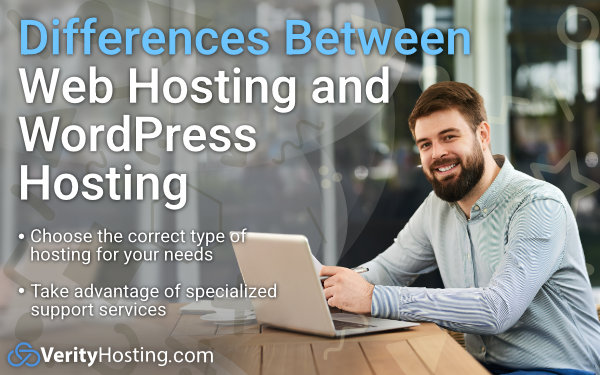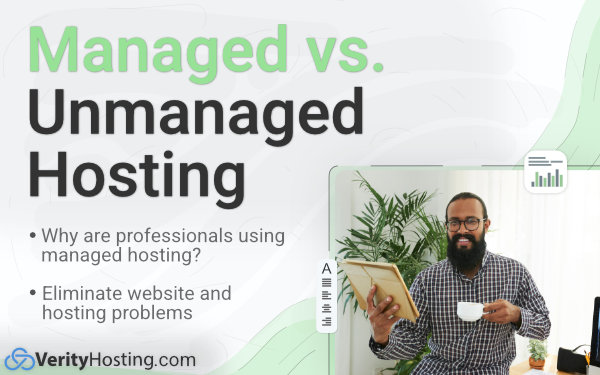
Web Hosting vs Managed WordPress Hosting
Learn what web hosting is and how to choose the best hosting provider for your next project.
Need help managing your small business website? click here
Clear communication is the most important thing you can have with your web designer. Communication is vital in ensuring the project goes as planned and you get the design you want.
In this article,
We'll walk you through the process of talking to a web designer the right way from start to finish so you can get an amazing design for your small business or organization.
A website designer is more of an artist. They work on the look and feel of the website. A website is more of an art piece, even the simple one. A good website designer knows this and will focus more on the art side of the project.
There are a lot of website designers that don't know how to code. Many designers only work on graphic design. They then send the design to someone who can turn it into code.
A website developer is someone who knows how to put everything together. They may work with a team of designers and programmers or be able to do most things themselves.
Developers are more of a manager on a website design project. They help coordinate everything to ensure the project is done right.
When talking to a website designer, it's essential to be clear about your needs and expectations for the project.
That means telling the designer what you're looking for in detail, sharing your ideas and feedback, and being clear about your budget and timeline.
It's also important, to be honest about what you know and don't know, so the designer can give you accurate information and help you stay on track.
By having good communication, you'll ensure that you get the website you want. And that both you and your designer are happy with the final product.
Do your research, know what you want, and have an idea of the look and feel of the new website.
This will help the designer better understand your needs and get the best design for your project.
It's also important to be clear and specific about the message you are trying to convey to the customers visiting your website. That is, every website has a particular style, and that style will be important to your brand.
Feel free to share all your ideas and give the designer as much information as possible. More is always better!
If you don't know something, ask!
No question is too small, and the more information the designer has, the better they can create a perfect website for you.
Once you've found a web designer that you feel comfortable with, the next step is to get familiar with the website design process.
This will help you understand what's happening during the design phase and give you a better idea of what to expect.
Normal Website Design Process:
Typically a standard website design can take anywhere from three weeks to several months to complete. This depends on the complexity of the website, the amount of artwork, and how many pages are included.
Good copywriting and sales copy can also slow down the process. Just be patient with the designer; they have a lot on their plate to get everything just right.
Now that you have an understanding of working with your web designer, it's time to start thinking about what you want your website to look like.
Remember, your web designer is there to help you create the website you would like to see, so don't be afraid to share your vision in detail.
Here are a few things to think about:
There is a lot to review; however, your designer will know all the right questions to ask, so don't get too bogged down with all the details. Just jot down some ideas and make yourself a wish list.
This is where you'll need to be clear about your goals and objectives, so your designer can get a good idea of the type of website you're looking for.
This conversation is usually the second or third time you speak to the designer. As by know, you have an idea of the design you are looking for.
The designer will have some questions about your business, such as:
The web designer will need to know some of the information above to help narrow in on the right design.
Start by giving the designer a broad overview of your thoughts and feelings on the project.
Use whatever language makes the most sense to you, whether technical or not and explain what kind of website you envision.
Keep in mind that this process is an ongoing conversation.
Be prepared to provide specific examples to help visualize what you are looking for.
It is helpful to look at websites from similar businesses or industries and then point out elements or styles that appeal to you, both esthetically and functionally.
You may even want to suggest certain features or plugins that could be helpful for your site.
Whatever route you go, make sure the designer understands your needs and has a good understanding of what you are looking for with your website design.
It's important to have a list of questions ready so that you can get your answers quickly and stay on the same page with the designer.
This will help you better understand their design process, timeline, and pricing.
This is especially important as there are certainly technical challenges that could arise during the project.
When talking to the web designer, it's important to be clear on your expectations and requirements.
As you communicate with your web designer, make sure that you are clear on who is responsible for which tasks.
These tasks can include such things as setting up hosting, creating the scope of the project, providing website copy, and any other things that are important to you.
Be direct about what you need and expect from your web designer. It's also good to provide examples of work you find inspiring so they can understand what you're looking for.
And don't forget to ask questions�the more information they have, the better they can understand your needs.
It's essential to clearly understand your budget before you approach a web designer.
Set a realistic budget range that you're comfortable spending on the project. Understand that good design will cost more. Web design is all about creating good design and content. So the more content, the more expensive the design will be.
Make sure to be upfront and honest about the financial limitations of your project.
Be prepared to provide an approximate figure of what you'd like to spend and ask if their services fit within this budget range.
In addition, ask if they have any additional packages or deals for web design services that might be better suited for your project needs.
Doing so could lower costs without compromising quality; every penny counts!
When you're working with a web designer, communication is vital. If you want your website to be a reflection of your business, you need to communicate effectively with your designer.
They need to understand your brand, vision, and target audience. That's why it's essential to be clear and concise when communicating with them.
Make sure you provide them with all the necessary information and ask questions if you need help understanding something. The better you communicate, the more effective your website will be.
How often should you be in touch with your website designer? This will depend on how the designer is used to working.
Most designers will have a schedule they will keep for each project. This will change depending on how large the project is.
Generally, it would help if you checked in once a week, usually by email, to ensure everything is on schedule.
But if there are any significant changes or updates that need to be made, then you should be in touch more frequently.
Your web designer will also let you know the turnaround time for changes and updates, so you'll learn how long you'll need to wait between sending requests.
Of course, this can vary depending on the designer's workload and the complexity of the requests. It pays to be a little patient. Staying on top of the design is good, but giving them a little wiggle room is also a good idea.
Website design is an art; rushing the artist is never a good idea.
Effective two-way communication is vital to any successful relationship, especially when dealing with visual art.
Here are some tips to ensure you get the most out of your collaboration:
If anything needs extra time or attention during development, speak up as soon as possible.
A good web designer can take your ideas and create a visually appealing and engaging site for your visitors. They will help to create a website optimized for search engine rankings and responsive for any device.
A web designer will also help with user experience (UX) design. This includes creating an effective navigation structure, improving content placement, and utilizing design elements such as colors and typography to make the site more visually appealing.
Finally, they can provide technical assistance such as content management systems (CMS) integration and programming.
All this means that you can focus on other aspects of your business. At the same time, the web designer diligently works on creating the perfect website for you!
Being as straightforward as possible about what you want is essential when talking to a web designer.
Have a solid idea of the look and feel you're going for, and be prepared to provide images and other references. If you need clarification on what you want, be prepared to be open to the designer's suggestions.
Remember, a web designer is an expert in creating websites that look great and are easy to use. So be sure to take advantage of their expertise and trust their judgment regarding layout and design.
All photos used have been curated by Verity staff

Verity Editorial Staff
The editorial staff at VerityHosting is a team of hosting experts with over 25 years of experience managing, monitoring, and maintaining hosting services for small businesses.
Get helpful small business tips from VerityHosting.com

Learn what web hosting is and how to choose the best hosting provider for your next project.

Know the different hosting options before you purchase and avoid paying for unnecessary features or services.

Learn why SEO professionals use managed hosting for their small business projects.
Verity Hosting - Providing professional managed hosting services while being focused on helping our clients to build a successful business on the web and on mobile.